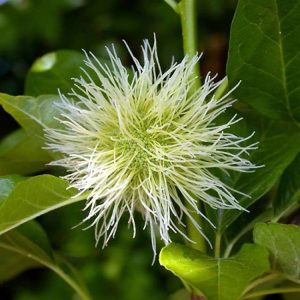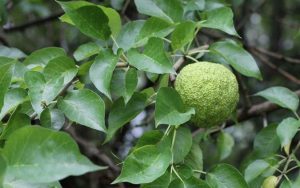Orange Tree – Maclura Pomifera


The Maclura Pomifera, commonly called The Orange Tree, is a small tree or large shrub, originating from North America. It was first introduced to Italy in 1818 when starting in the mid 18th century its leaves were used to feed silk worms; following a serious disease which struck the mulberries used in sericulture, but, unfortunately with little success. Instead the maclura pomifera was used in thousands of ways, its wood as a raw material for bows and arrows, the roots to extract a natural dye. The maclura wood is a hard, pleasantly coloured wood and is still used today in the production of work tools.
TERRAIN
The specimens belonging to this variety, given their rusticity, grow well in all types of soil even if they prefer a deep loose soil which allows a correct development of the root system. They prefer a sunny position, even if they grow well in any position, they hold up in strong winds and coastal seaspray conditions; they can also bear very low temperatures as low as -20°.
FLORA AND FRUIT
The Maclur Pomifera’s leaves are very similar to those of the orange tree but its fruit is very different. It is a dioica (that is with male specimens separate to those female): the inflorescences are sphere shaped, the fruit instead is mass of wrinkled green spheres. It has a woody texture, with a greenish wrinkled outer layer and milky juice. We are dealing with a multiple fruit, which transforms from and internal inflorescence.
USE AND HEALTH CONTENT
The fruit is very hard and has a citrus fragrance, it is edible and its main constituents are isoflavones of which a few have an anti-tumour
reaction and others are anti-inflammatory and naturally analgesic. It is therefore advisable to freeze the fruit: once frozen, they can be grated, and a teaspoon eaten once a day as a natural anti-oxidant, three times a day in the case of illness or inflammation…The fresh flesh and juice can be drunk in boiling hot water, it has a citrus flavor. You can also eat the seeds (one fruit can contain up to 500), they have a similar taste to those of the sunflower, you can eat them raw or toasted.
